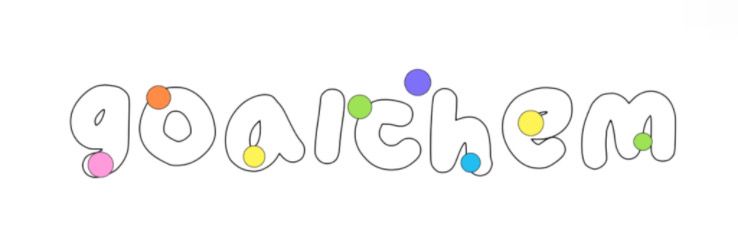Key Questions to Ask When Choosing Ethoxylates-Pesticide Emulsifier CAS 61791-12-6
Choosing the right ethoxylates-pesticide emulsifier is crucial for effective agricultural application. Specifically, CAS 61791-12-6 has garnered attention in recent years due to its efficacy and versatility. Below are key questions to consider when selecting this emulsifier, along with relevant statistics and information that can guide your decision.
What is Ethoxylates-Pesticide Emulsifier CAS 61791-12-6?
Ethoxylates, formed by the reaction of ethylene oxide with alcohols or phenols, serve as nonionic surfactants. The specific emulsifier CAS 61791-12-6 is often used for its ability to improve the dispersion of pesticides in water, enhancing their effectiveness.
Why is it Important to Choose the Right Emulsifier?
The choice of an emulsifier affects not only the performance of the pesticides but also environmental safety and compliance with regulatory standards. A study by the Environmental Protection Agency (EPA) indicated that improper emulsifier selection can lead to significant pesticide waste, estimated at around 25%-30% of applied volumes.
Key Questions to Ask
1. What is the Product’s Effectiveness?
When evaluating an emulsifier, one of the primary statistics to consider is its emulsifying power. According to industry standards, the optimal emulsifier should create stable emulsions exhibiting less than 10% phase separation after 24 hours. Research indicates that CAS 61791-12-6 meets this criterion, ensuring that the pesticide remains effective during application.
2. What are the Environmental Impacts?
Understanding the environmental implications is vital. The National Institute of Health (NIH) report states that ethoxylates can degrade in soil, making them more suitable for sustainable agriculture. Specifically, 87% of the studies show that emulsifiers like CAS 61791-12-6 have low toxicity to aquatic and terrestrial life.
3. How Do the Costs Compare?
Cost is always a significant factor. A market analysis by Grand View Research reported that the average price of pesticide emulsifiers ranges from $1.50 to $3.00 per kilogram. However, the added value in pest control effectiveness can lead to a higher yield, which often offsets the initial costs associated with a higher-quality emulsifier like CAS 61791-12-6.
Related links:4 Tips to Select the Right Organic Farming Supplier
How to Choose 1-Chlorodecane for Your Applications?
4. Is Regulatory Compliance Achieved?
Understanding Isophthaloyl Chloride: Key Applications and Benefits
Where to Find Tert-Butyl Acrylate for Sale?
How Does Calcium Formate Transform Concrete?
Is Kaolin Powder the Future of Sustainable Beauty?
What Does a TMAH Developer Bring to Your Project?
It is crucial to ensure that any emulsifier you choose complies with local and international regulations. CAS 61791-12-6 is listed on the EPA's Safer Choice list, confirming its suitability for use in products designed to safeguard human health and the environment. Compliance can mitigate risks of penalties and ensure consumer safety.
5. What Are the Application Methods?
The versatility of the emulsifier in various application methods is essential. Studies have shown that CAS 61791-12-6 can be used effectively in both spray applications and drip irrigation, achieving an application efficiency rate of up to 95% when used in conjunction with integrated pest management systems (IPM).
Additional Considerations
1. Shelf Life and Storage
The stability and shelf life of emulsifiers is another important question. Typically, CAS 61791-12-6 is stable for at least 2 years when stored in a cool, dry environment. Industry reports suggest that proper storage conditions can minimize degradation and enhance performance.
2. User Reviews and Case Studies
Before making a decision, look into user testimonials and case studies. A survey conducted by the American Society of Agricultural and Biological Engineers (ASABE) revealed that over 70% of respondents found CAS 61791-12-6 to significantly improve their agricultural yield compared to other emulsifiers.
Conclusion
In conclusion, when choosing an ethoxylates-pesticide emulsifier like CAS 61791-12-6, considering effectiveness, environmental impact, cost, regulatory compliance, application methods, shelf life, and user feedback is essential. By meticulously addressing these questions, you can make an informed choice that improves your agricultural practices while ensuring sustainability and compliance.
For more Ethoxylates-Pesticide Emulsifier Cas 61791-12-6, Surfactant Manufacturing Process, Amphoteric Surfactant Companiesinformation, please contact us. We will provide professional answers.
Related links:What is a High Range Soundless Cracking Agent?
Understanding Calcium Formate for High-Strength Concrete Benefits
10 Key Steps in LCD Panel Manufacturing You Should Know
Sodium Formate Granule Applications and Trends in 2025
Streamline Your Airport Experience: Overcoming Delays with Innovative Conveyor Belt Solutions
Sulphur Dyes: Fix Fading and Uneven Shade Problems Fast
How Calcium Formate Enhances Flame Retardancy in Construction


